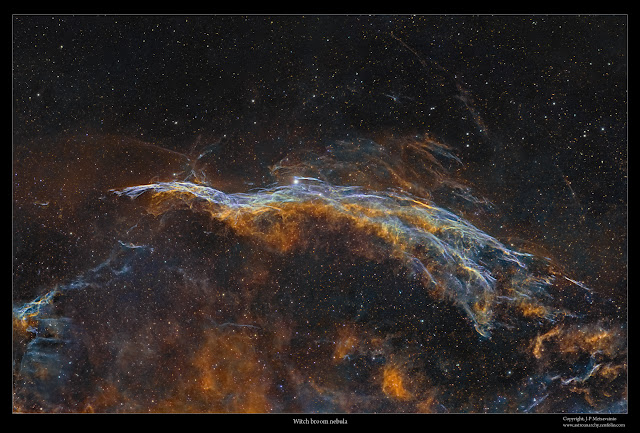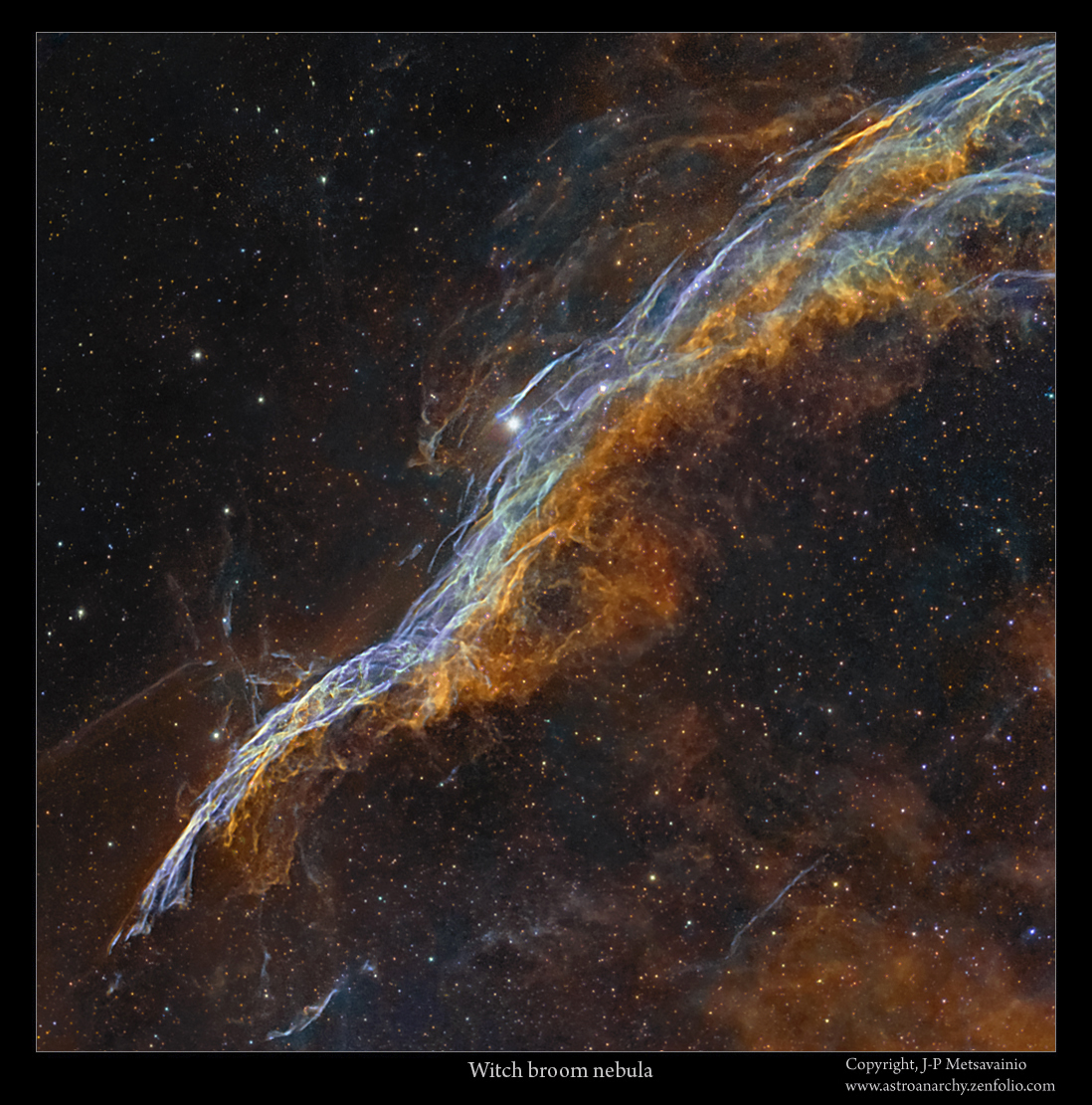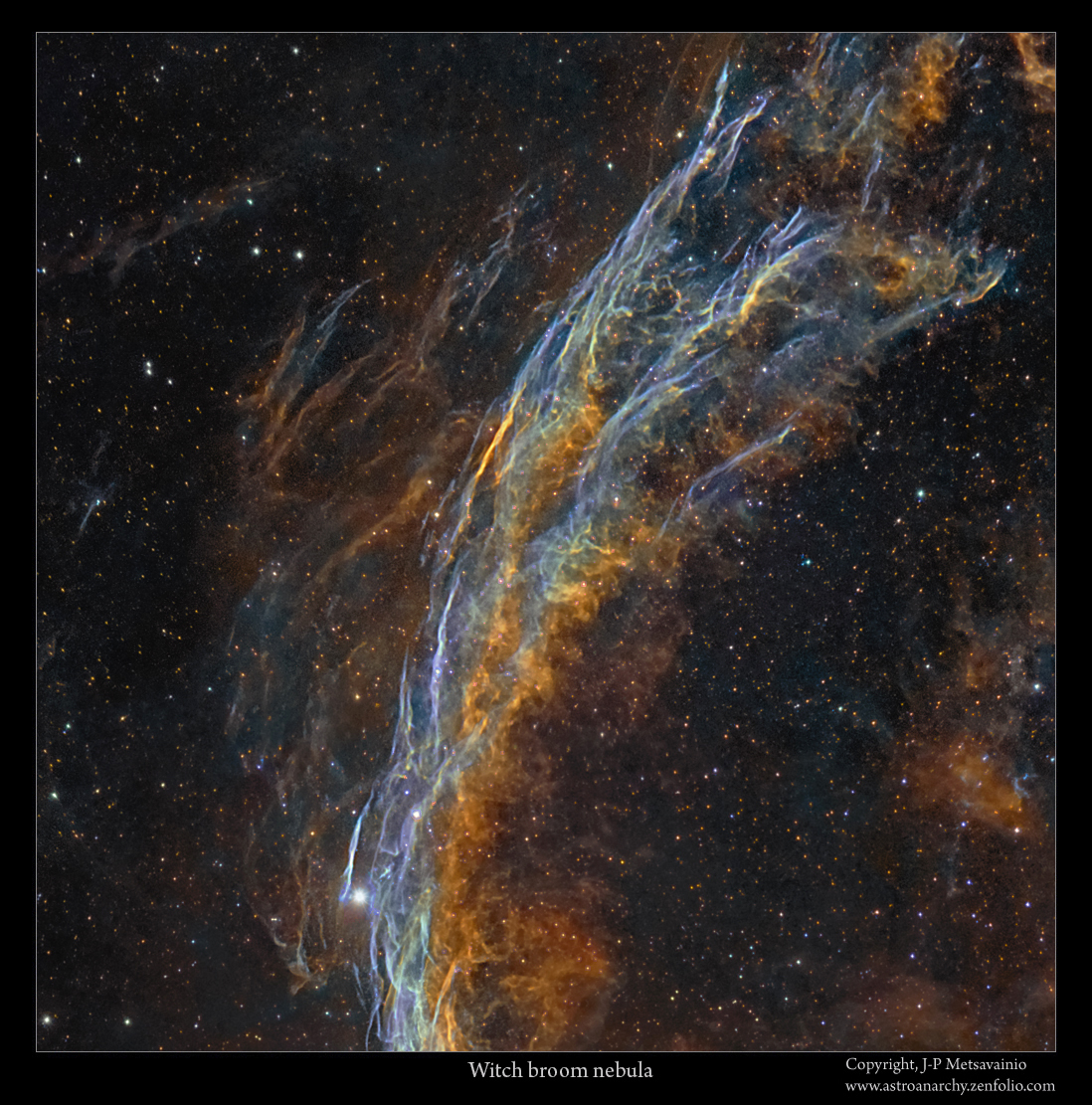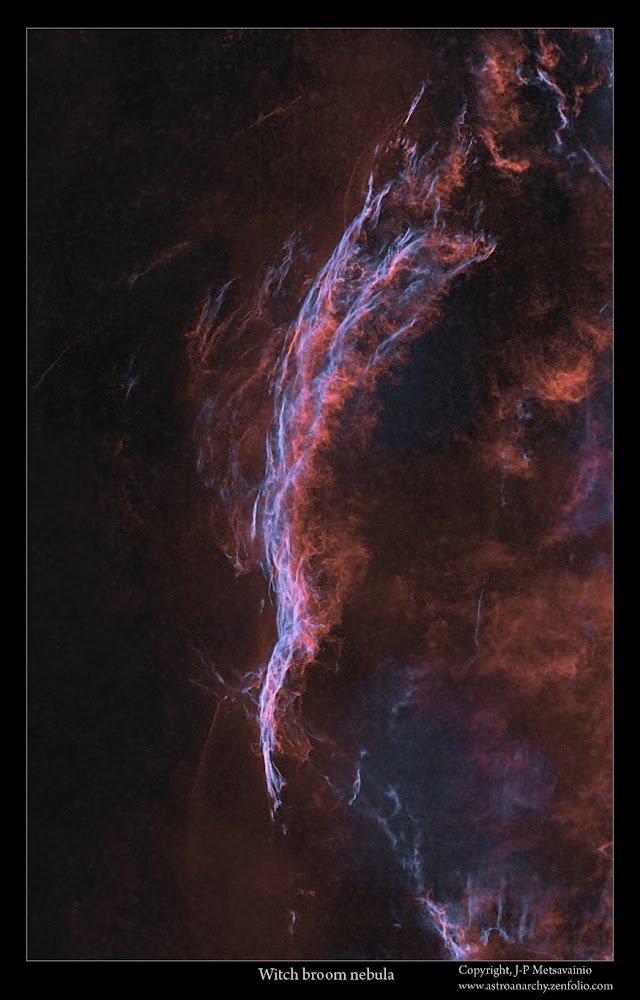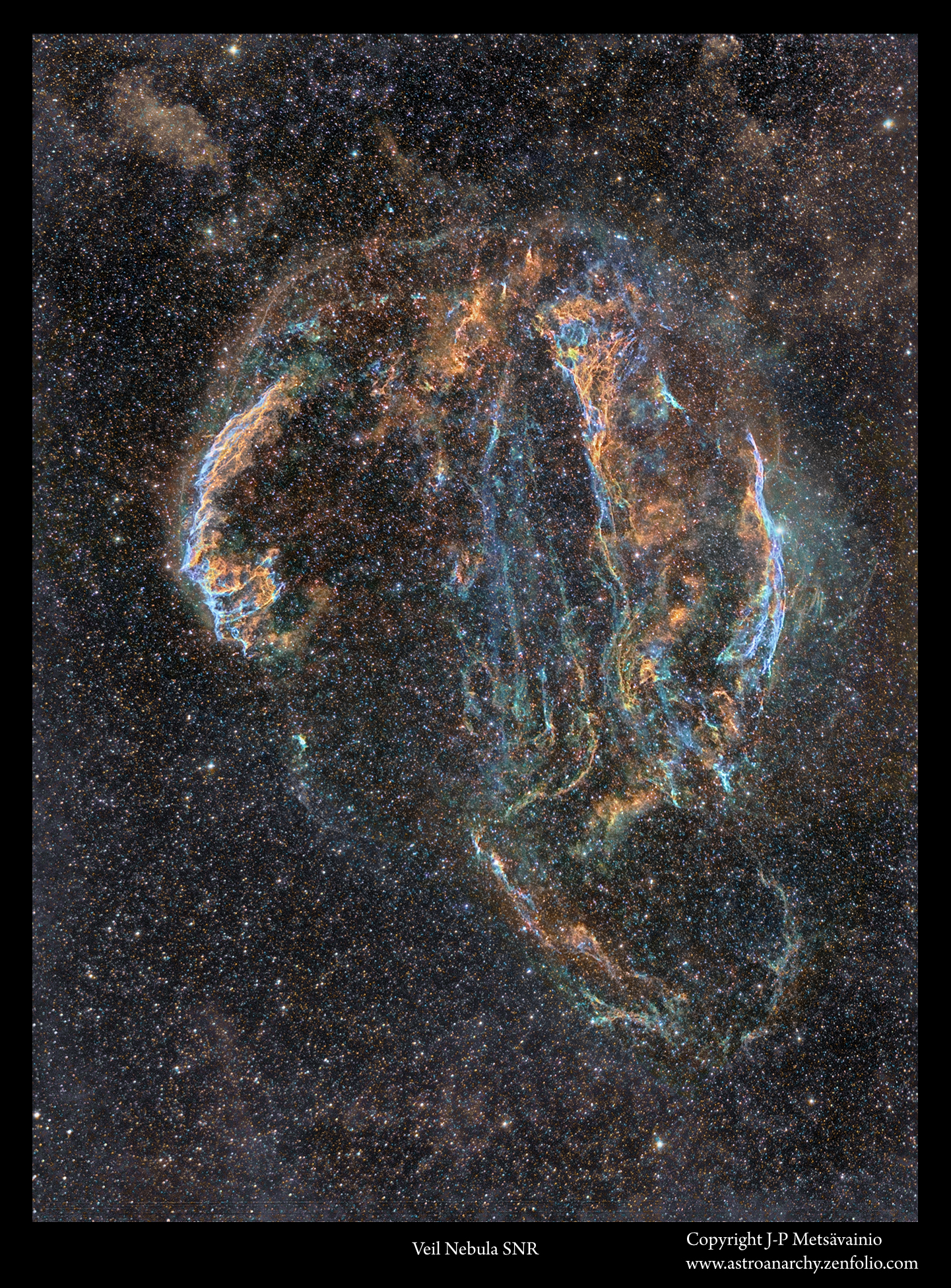COPYRIGHT, PLEASE NOTE
Thursday, October 1, 2015
A new image, the Witch's Broom Nebula
A two frame mosaic of the Veil Nebula supernova remnant, the Witch's Broom Nebula in mapped colors. Colors are from the emission of the ionized elements, Hydrogen, Sulfur and Oxygen.
Close up images
Click for a large image
A starless image
Click for a large image
An experimental starless version to show the structure of the filaments better.
Visual colors
Click for a large image
Natural color composition from the emission of ionized elements.
This composition is very close to a visual spectrum.
Witch's broom in light of an ionized oxygen only
Click for a large image
This image shows the Witch's Broom in Light of an ionized oxygen, O-III, alone.
Sunday, September 29, 2013
Three experimental starless Oxygen emission images of the Veil nebula
Buy a photographic print from HERE
Buy a photographic print from HERE
Buy a photographic print from HERE
Witch's Broom Nebula
A light emitted by the ionized Oxygen can be seen as blue hues.
Image is in mapped colors, from the emission of ionized elements, R=Sulfur, G=Hydrogen and B=Oxygen.
Buy a photographic print from HERE
Friday, November 9, 2012
Pickering's Triangle in Ha/OIII light
Pickering's Triangle is a small part of the Veil Nebula supernova remnant in constellation Cygnus.
Veil Nebula is a cloud of ionized gas and dust, leftovers from an exploded star. The star went off some 5000-8000 years ago at distance of about 1470 light years. This, relatively faint target, is difficult to image due to the large angular diameter, about three degrees, and a dense star field.
Red = Hydrogen, Blue = Oxygen. The last image shows channels combined.
An experimental starless image
Sometimes I published starless images to show the actual nebula better.
Wednesday, May 22, 2013
Filaments of the Veil nebula, starless view
This area of the nebula is filled with colorful filaments, ionized sulfur and hydrogen are seen as green, golden hues, ionized oxygen can be seen as blue.
The complexity of filaments stands out nicely in this starless image.
An original image with the stars
http://astroanarchy.blogspot.fi/2012/11/pickerings-triangle-project-finalized.html
Orientation in the Veil Nebula SNR
INFO
Exposure and processing details
Thursday, October 7, 2021
Filaments of Veil in mapped colors
I shot most of the lights for this image back in 2016, now I have added some new material to it and reprocessed the whole image. A version in visual color palette can be seen here, https://astroanarchy.blogspot.com/2021/09/filaments-of-veil-nebula-snr.html
Photo was shot with a Celestron Edge HD 11" telescope, Astrodon naarrow band filters and Apogee Alta U16 astro camera. New data is shot with a shorter focal length instrument, Tokina AT-x 300mm f2.8 camera lens, same camera and filters. Dim background emission is taken from a new material and added to this photo.
Total exposure time is now 44 hours for the whole three frame mosaic and the resolution is 11.000 x 4000 pixels.
Click for a large image
Every single pixel in this 3d-animation is from the original 2D-image above. The model is based on on known scientific facts, deduction and some artistic creativity. The result is an appraised simulation of reality. Astronomical photos are showing objects as paintings on a canvas, totally flat. In reality, they are three dimensional forms floating in three dimensional space. The purpose of my 3d-experiments is to show that and Give an idea, how those distant objects might look in reality.
Monday, January 2, 2017
Astro Anarchy, the year 2016
All companies are offering the first class products and service!
Wednesday, December 14, 2016
Filaments of the Veil Nebula
Please, click for a large image
Image is in mapped colours, from the emission of ionized elements, R=Sulphur, G=Hydrogen and B=Oxygen. Image spans about three degrees vertically.
A closeup
Please, click for a large image
A horizontal version
Please, click for a large image
Orientation in Veil Nebula
Please, click for a large image
Area of interest is marked as a white rectangle
This wide field photo of the Veil Nebula was shot with Canon EF 200 mm f1.8 camera lens, QHY9 astrocam and Baader narrowband filters.
O-III, 51 x 1200 s binned 2x2 = 17 h
Images used for this mosaic

